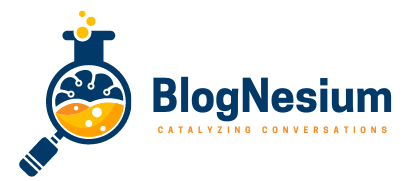Introduction to Mental Health in the Workplace
Mental health, encompassing emotional, psychological, and social well-being, is fundamental to overall health. Just as physical health is vital to an individual’s functioning, mental health significantly influences one’s ability to deal with stress, relate to others, and make decisions. Within the workplace, mental health has far-reaching implications, impacting employee satisfaction, productivity, and organizational success. Recognizing mental health as equally important as physical health can lead to a more holistic approach to employee well-being.
The workplace is a substantial part of many people’s lives, often shaping their social environment and personal identity. A supportive work environment that prioritizes mental health can reduce absenteeism, enhance performance, and foster a more engaged workforce. On the contrary, neglecting mental health can result in increased stress, burnout, and even serious psychological conditions. Therefore, understanding and addressing mental health in the workplace is crucial for maintaining not only individual well-being but also the efficiency and viability of the organization.
The aim of this blog is to explore the various facets of mental health in the workplace, providing valuable insights and practical strategies for both employers and employees. We will delve into the definition and importance of mental health, examine its impact on workplace dynamics, and discuss effective measures for promoting a mentally healthy work environment. By the end of this blog, readers will gain a comprehensive understanding of the importance of mental health in the workplace and be equipped with actionable steps to foster a supportive and productive organizational culture.
Understanding the Impact of Mental Health on Work Performance
Mental health significantly shapes the efficacy and productivity of employees in the workplace. Poor mental health can manifest through a variety of symptoms, each affecting job performance in critical ways. Common indicators include chronic fatigue, a diminished ability to concentrate, increased errors, and higher rates of absenteeism. According to the World Health Organization, depression and anxiety alone cost the global economy an estimated $1 trillion each year in lost productivity.
One of the most prevalent symptoms of poor mental health in the workplace is fatigue. Employees battling ongoing stress, anxiety, or depression often report feeling perpetually tired, which can inhibit their ability to complete tasks efficiently. Studies have found that 43% of people with severe stress take their daily fatigue to work, leading to decreased productivity.
Lack of focus is another major consequence. When an employee is mentally distressed, their cognitive bandwidth is consumed by their emotional struggles, leaving them with less capacity to concentrate on work tasks. This can result in missed deadlines and overall reduced work quality. For instance, research published in the Journal of Occupational and Environmental Medicine found that workers with pre-existing mental health conditions had a 32% reduction in productivity levels.
Increased mistakes are a frequent byproduct of mental health issues. Precision and accuracy are often the first casualties, leading to costly errors. A study by the American Psychological Association revealed that workers under high stress were five times more likely to make mistakes than their counterparts.
Lastly, absenteeism linked to mental health poses a significant challenge. Employees with poor mental health are more likely to take frequent sick leaves, disrupting workflows and increasing the burden on their colleagues. Data from the National Institute of Mental Health reports that 20% of employees take time off work due to stress-related illnesses every year.
These statistics and real-life examples underscore the profound impact mental health can have on both individual employees and organizational performance, emphasizing the need for proactive measures in fostering a supportive work environment.
Strategies for Employers to Foster a Mentally Healthy Workplace
Employers play a crucial role in promoting mental health within the workplace. One of the most effective strategies involves creating a supportive company culture that prioritizes mental well-being. This can be achieved by actively encouraging openness about mental health issues and actively combating stigma associated with mental health problems. For instance, Microsoft is renowned for its focus on employee well-being, integrating mental health days into their company policy and providing a range of wellness programs.
Another vital strategy is the provision of mental health resources and training. Organizations can offer access to Employee Assistance Programs (EAPs), which provide confidential counseling and support services. Google, for example, has implemented an extensive EAP and mental health resource toolkit that employees can easily access. Additionally, mental health first aid training can be provided to managerial staff, equipping them with the skills to recognize and address mental health issues among employees.
Implementing flexible working arrangements is also a significant step towards supporting mental health. Flexible working hours and remote work options can help employees balance work and personal life, reducing stress and burnout. Dell Technologies has exemplified this through their Connected Workplace program, which offers a diverse range of flexible working models, accommodating different employee needs.
Furthermore, fostering open communication about mental health can encourage employees to share their struggles without fear of discrimination or stigma. Regular check-ins, feedback sessions, and an open-door policy can make a substantial difference. SAP, for instance, initiated the “Are You OK?” campaign, encouraging employees to discuss mental health openly and providing a platform for sharing personal experiences.
Through the adoption of these strategies, employers can create a mentally healthy workplace that not only enhances employee well-being but also boosts productivity and job satisfaction. Integrating such practices reflects a commitment to the holistic health of the workforce, ultimately leading to a more resilient and engaged team.
The Role of Leadership in Promoting Mental Health
The role of leadership in promoting mental health within the workplace is undeniably pivotal. Leaders and managers possess the unique ability to shape the organizational culture and foster an environment where mental well-being is prioritized. The importance of training leaders to recognize and address mental health issues cannot be overstated. By equipping them with the necessary knowledge and skills, leaders can identify early signs of mental health struggles among employees and take proactive measures to provide support.
Moreover, leaders serve as role models within the organization. When leaders openly discuss mental health, seek help when needed, and demonstrate healthy coping mechanisms, they set a powerful example for their teams. This behavior encourages employees to be more open about their own mental health challenges and fosters a supportive, stigma-free environment. A workplace culture that embraces mental health discussions without judgment leads to increased employee morale and a stronger sense of community.
The influence of empathetic leadership on employee morale and mental health is profound. Empathetic leaders listen actively to their employees, understand their concerns, and respond with compassion. This approach not only helps in addressing work-related stressors but also builds trust and strengthens the employer-employee relationship. Employees who feel supported by their leaders are more likely to experience higher levels of job satisfaction, engagement, and overall well-being.
Creating a stigma-free environment involves ongoing efforts from the leadership team to implement policies and practices that promote mental health. This includes providing access to mental health resources, offering flexible working arrangements, and encouraging regular check-ins. Leaders should also ensure that mental health initiatives are integrated into the organizational strategy, demonstrating a genuine commitment to the mental well-being of their workforce.
In summary, leaders and managers play a crucial role in promoting mental health in the workplace. Through training, leading by example, and fostering an empathetic and stigma-free environment, leaders can significantly impact employee mental health and contribute to a healthier, more productive workplace.
Practical Strategies for Employees to Manage Their Mental Health
In today’s fast-paced work environment, employees often face significant stress and challenges that can take a toll on their mental health. Therefore, it is crucial for individuals to proactively manage their well-being through various strategies tailored to their unique needs. One effective approach is to incorporate mindfulness practices into the daily routine. Techniques such as deep breathing exercises, meditation, and mindful breaks can help relieve stress and increase mental clarity.
Achieving a healthy work-life balance is another essential strategy. Employees should prioritize time for personal activities and relaxation outside of work hours. This might mean setting specific boundaries, such as not checking work emails after a certain time or taking regular vacations to recharge. Establishing these boundaries can help prevent burnout and allow for a more fulfilling personal life.
Moreover, seeking professional help should never be overlooked. Counseling or therapy can provide a safe space to discuss challenges and develop coping mechanisms. Many workplaces also offer Employee Assistance Programs (EAPs) that provide confidential support and resources for employees dealing with mental health issues.
Setting healthy boundaries is vital. This includes learning to say no when necessary and delegating tasks to others. By doing so, employees can manage their workload more effectively and reduce unnecessary stress. It is important to communicate these boundaries clearly with colleagues and supervisors to foster an environment of mutual respect.
Lastly, self-care routines play a significant role in maintaining mental health. Regular exercise, a balanced diet, and sufficient sleep are foundational to overall well-being. Additionally, engaging in hobbies and social activities can provide a sense of enjoyment and fulfillment outside of work. Encouraging self-awareness is critical; employees should regularly check in with themselves to identify any signs of stress or mental fatigue and take corrective action promptly.
By adopting these practical strategies, employees can take proactive steps to manage their mental health and maintain a balanced, fulfilling work life. Mental well-being is an ongoing journey, and consistent effort is key to achieving long-term stability and happiness.
Having a formal mental health policy in the workplace is a crucial step toward fostering an environment that supports the well-being of all employees. A well-crafted mental health policy not only enhances overall productivity but also demonstrates the company’s commitment to addressing mental health concerns, ultimately reducing stigma. It is essential for such a policy to be comprehensive, accessible, and transparent to ensure that all employees feel supported.
One of the key components of an effective mental health policy is accessibility to resources. Companies should provide information on available mental health services, both within and outside the workplace. This includes access to counseling services, helplines, and mental health programs. Ensuring that employees are aware of these resources is fundamental to their utilization and benefit.
Confidentiality is another critical aspect. Employees must feel secure in the knowledge that any disclosures regarding their mental health will be handled with strict confidentiality. The policy should clearly outline how personal information will be protected and what measures are in place to maintain privacy. This assurance encourages employees to seek help without fear of judgment or repercussions.
Clear procedures for seeking help are also essential. The mental health policy should delineate the steps for accessing mental health resources. This includes how to approach HR or a designated mental health officer, the process for referral to professional mental health services, and follow-up procedures. Providing a straightforward and user-friendly guide can make a significant difference in employees feeling empowered to seek help.
To draft and implement a mental health policy, begin by consulting with mental health professionals and reviewing existing policies from other organizations. Collect feedback from employees to understand their needs and concerns. Draft the policy with clear language, avoiding jargon, and ensure it covers all key components. Once the draft is ready, review and revise it based on additional feedback and professional input. Finally, implement the policy by conducting training sessions and workshops to educate the employees about its provisions and importance.
Effective mental health initiatives in the workplace require robust evaluation methods to understand their impact and areas for improvement. By employing a variety of tools and surveys, employers can measure the success of these initiatives and ensure they align with both organizational goals and employee well-being.
Methods and Metrics for Evaluation
Several key metrics can be employed to assess the effectiveness of mental health initiatives. Absenteeism and presenteeism rates provide insight into the overall mental well-being of employees. Reduced absenteeism, for instance, can indicate improvements in employee mental health, while reducing presenteeism – where employees are present but not fully productive due to mental health issues – showcases an initiative’s positive impact on workplace morale.
Employee turnover rates are another critical metric. High turnover rates might signal underlying mental health issues, whereas a decrease can indicate that employees feel more supported and valued. Additionally, performance metrics such as productivity levels and error rates can help evaluate whether mental health initiatives are positively impacting workplace efficiency.
Tools and Surveys
Surveys are a vital tool for gauging employee mental health and well-being. Tools like the Mental Health Continuum Short Form (MHC-SF) and the General Health Questionnaire (GHQ) can provide valuable insights. Employers can also implement regular pulse surveys to receive real-time feedback from employees about their mental health and satisfaction with workplace initiatives.
Moreover, Employee Assistance Programs (EAPs) often include assessment tools that can help employers monitor the usage and effectiveness of these programs. Through such tools, employers can pinpoint which areas are benefiting employees and which require enhancement.
Importance of Continuous Improvement and Feedback Loops
Continuous improvement and feedback loops are essential for the sustained success of mental health initiatives. Regularly analyzing feedback from surveys and focus group discussions helps organizations adapt their strategies to meet evolving employee needs. Establishing a culture of open communication where employees feel comfortable sharing their experiences can lead to more effective mental health programs. This approach not only ensures that initiatives remain relevant but also fosters a supportive and resilient workplace environment.
Conclusion: The Path Towards a Mentally Healthy Workplace
The importance of mental health in the workplace cannot be overstated. Throughout this blog, we have explored various facets of mental well-being at work, demonstrating that it is a multifaceted issue needing both organizational and individual efforts. Employers are tasked with creating supportive environments that include open communication channels, mental health training programs, and accessible mental health resources. Employees, on the other hand, are equally responsible for engaging in healthy work habits, seeking help when needed, and participating in mental health initiatives.
Creating a mentally healthy workplace is not a one-time task but an ongoing process requiring commitment from all parties involved. Employers must continually evaluate and improve upon mental health strategies, ensuring they remain relevant and effective. Similarly, employees should be encouraged to take active roles in promoting their well-being and that of their colleagues. The goal is to foster a culture where mental health is given the attention and respect it deserves, as this not only enhances individual well-being but also boosts overall workplace productivity.
To truly make a difference, both employers and employees need to take decisive action and continue educating themselves about mental health. Interested readers seeking to delve deeper into this crucial subject can refer to additional resources provided by reputable organizations such as the World Health Organization (WHO) and the National Institute of Mental Health (NIMH).
By understanding and embracing the mutual responsibilities in fostering a mentally healthy workplace, we can pave the way toward more supportive, productive, and happier work environments. Let us take these strategies to heart and commit to fostering a more inclusive and supportive environment for mental health.












